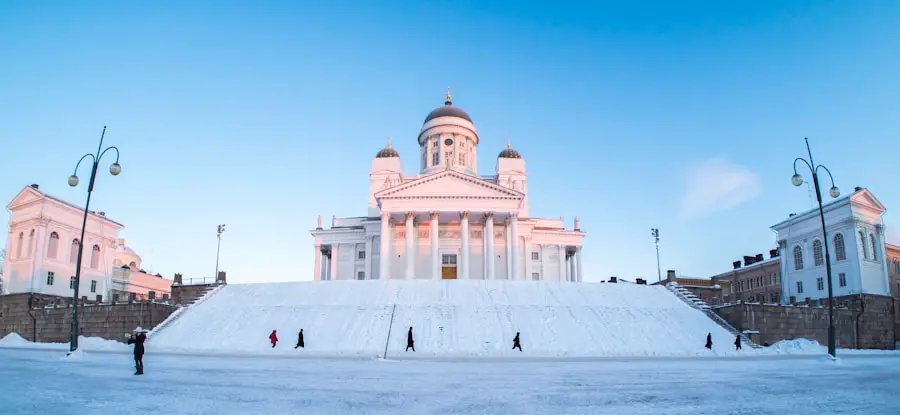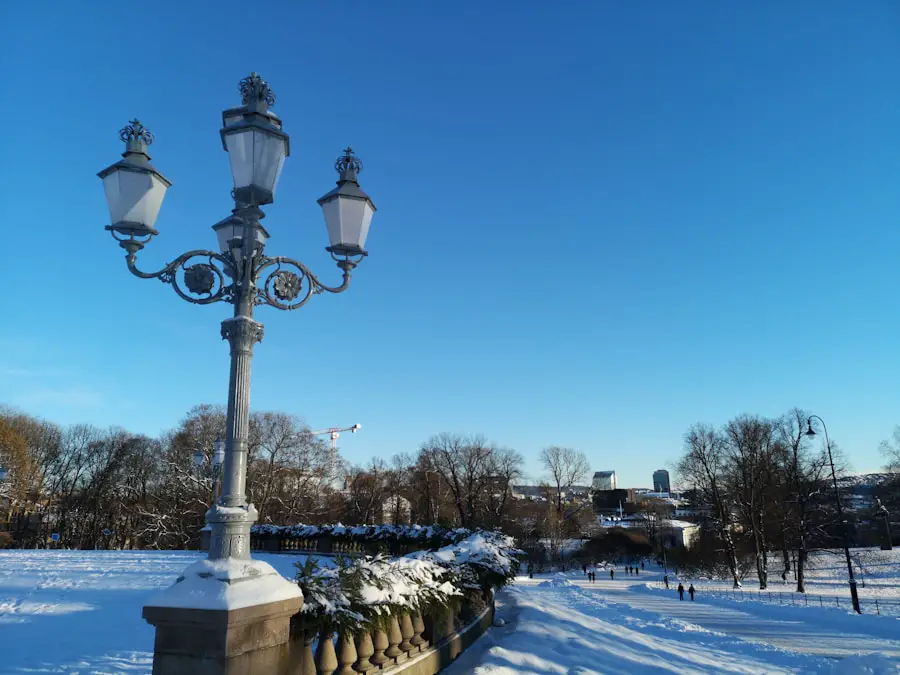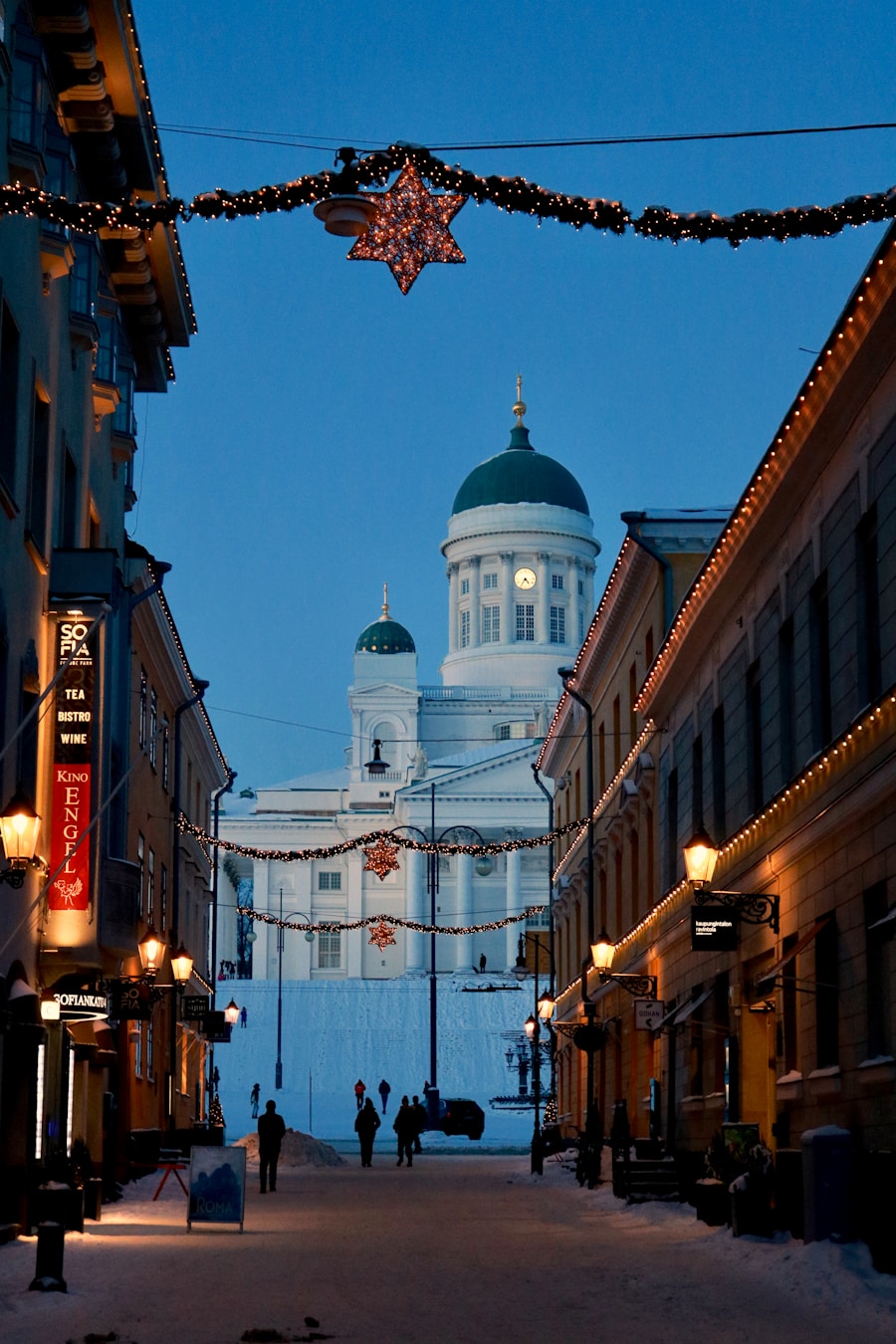Nairobi, the capital city of Kenya, is a vibrant metropolis that serves as a gateway to East Africa. Established in the late 19th century as a railway depot, it has evolved into a bustling urban center that blends modernity with rich cultural heritage. The city is not only the political and economic hub of Kenya but also a melting pot of diverse cultures, languages, and traditions.
With a population exceeding four million, Nairobi is one of the largest cities in Africa, characterized by its dynamic energy and a unique juxtaposition of urban life and natural beauty. One of the most remarkable features of Nairobi is its proximity to wildlife. The Nairobi National Park, located just a short drive from the city center, is home to a variety of animals, including lions, giraffes, and rhinos.
This unique aspect of Nairobi allows visitors to experience the thrill of a safari without venturing far from urban comforts. The city also boasts a rich history, with numerous museums, galleries, and cultural institutions that reflect its colonial past and contemporary developments. From the bustling markets of Eastleigh to the upscale neighborhoods of Karen and Westlands, Nairobi offers an array of experiences that cater to all types of travelers.
Key Takeaways
- Nairobi is the capital city of Kenya and is known for its vibrant culture, diverse wildlife, and beautiful landscapes.
- The weather in Nairobi is generally mild and pleasant, with two rainy seasons and two dry seasons throughout the year.
- The best time to visit Nairobi for wildlife safaris is during the dry seasons, from January to March and July to October, when the animals are easier to spot.
- Peak tourist season in Nairobi is during the dry months, especially from July to October, when the weather is ideal for outdoor activities and wildlife viewing.
- Off-peak travel season in Nairobi is during the rainy months, from April to June and November to December, when there are fewer tourists and lower accommodation prices.
Weather and Climate in Nairobi
Nairobi enjoys a temperate climate due to its elevation of approximately 1,795 meters (5,889 feet) above sea level. The city experiences two main seasons: the dry season and the rainy season. The dry season typically runs from June to October and is characterized by warm days and cool nights.
During this period, temperatures can range from 10°C (50°F) at night to around 26°C (79°F) during the day. The pleasant weather makes it an ideal time for outdoor activities, including wildlife safaris and city tours. Conversely, the rainy season occurs in two phases: the long rains from March to May and the short rains from October to December.
The long rains are usually heavier and can lead to occasional flooding in some areas. Temperatures during this season remain relatively stable, but the increased humidity can make it feel warmer. Despite the rain, Nairobi’s lush landscapes come alive during this time, offering a different perspective on the city’s natural beauty.
Travelers should be prepared for sudden downpours, especially in April and May when rainfall peaks.
Best Time to Visit Nairobi for Wildlife Safaris

For those specifically interested in wildlife safaris, the best time to visit Nairobi is during the dry season from June to October. This period coincides with the Great Migration in neighboring Maasai Mara, where millions of wildebeest and zebras traverse the plains in search of greener pastures. While Nairobi National Park may not host the migration itself, it offers excellent opportunities for wildlife viewing as animals congregate around water sources that become scarce during the dry months.
During this time, visibility is generally better due to less foliage on trees and shrubs, making it easier for visitors to spot animals. Early morning and late afternoon are particularly rewarding for game drives when animals are most active. Additionally, the dry season provides comfortable temperatures for outdoor activities, allowing visitors to enjoy both wildlife encounters and the stunning landscapes that surround Nairobi.
The clear skies also enhance photography opportunities, making it an ideal time for capturing memorable moments in the wild.
Peak Tourist Season in Nairobi
| Month | Number of Tourists | Hotel Occupancy Rate |
|---|---|---|
| June | 50,000 | 85% |
| July | 60,000 | 90% |
| August | 55,000 | 88% |
The peak tourist season in Nairobi aligns closely with the dry season, particularly from July to September. This period attracts a significant influx of international tourists eager to experience Kenya’s renowned wildlife and natural beauty. Accommodations in and around Nairobi often fill up quickly during these months, leading to higher prices for hotels and safari packages.
Travelers planning to visit during this peak season should book their accommodations and tours well in advance to secure their preferred options. In addition to wildlife safaris, peak season also coincides with various cultural events and festivals that draw visitors from around the world. The Nairobi International Trade Fair, held annually in October, showcases local products and innovations while promoting trade relations within East Africa.
This event attracts business travelers and tourists alike, further contributing to the city’s bustling atmosphere during peak season. The vibrant energy of Nairobi during these months creates an exciting backdrop for exploration and adventure.
Off-Peak Travel Season in Nairobi
Traveling to Nairobi during the off-peak season can offer a different experience altogether. The months of March to May and November to early December are considered off-peak due to increased rainfall and cooler temperatures. While some may shy away from visiting during these months due to potential weather disruptions, there are distinct advantages to traveling during this time.
Fewer tourists mean less crowded attractions, allowing for a more intimate experience with both nature and culture. Moreover, off-peak travel often comes with significant cost savings. Accommodations and safari packages tend to be more affordable during these months as hotels lower their rates to attract visitors.
This can be particularly advantageous for budget-conscious travelers or those looking for extended stays without breaking the bank. Additionally, the lush greenery brought on by the rains enhances the beauty of Nairobi’s landscapes, making it an excellent time for photography enthusiasts who wish to capture vibrant scenes of nature.
Cultural and Festive Events in Nairobi

Celebrating Heroes and Heritage
One notable event is Mashujaa Day (Heroes’ Day), celebrated on October 20th each year. This national holiday honors those who contributed towards Kenya’s independence and development. Various activities take place across the city, including parades, cultural performances, and exhibitions that showcase Kenya’s heritage.
A Celebration of Film and Culture
Another significant event is the Nairobi International Film Festival held annually in December. This festival celebrates local and international filmmakers by screening a diverse range of films that highlight various themes and cultures. It provides a platform for filmmakers to showcase their work while fostering discussions about cinema’s role in society.
Enriching Cultural Experiences
Attending such events not only enriches visitors’ understanding of Kenyan culture but also offers opportunities for interaction with locals who share their stories and traditions.
Tips for Traveling to Nairobi During Different Seasons
When planning a trip to Nairobi, it’s essential to consider how seasonal changes can impact your travel experience. During the dry season, travelers should pack lightweight clothing suitable for warm days but also include layers for cooler evenings. Comfortable walking shoes are crucial for exploring both urban areas and national parks.
Additionally, sunscreen and insect repellent are advisable due to increased sun exposure and potential mosquito activity. In contrast, if visiting during the rainy season, waterproof gear becomes essential. A good quality rain jacket or poncho can make outdoor excursions more enjoyable despite occasional downpours.
It’s also wise to carry an umbrella or a compact travel umbrella for unexpected showers while exploring the city. Travelers should remain flexible with their plans during this time; some activities may be affected by weather conditions, but this can also lead to unique experiences such as witnessing vibrant landscapes or fewer crowds at popular attractions.
Choosing the Best Time to Travel to Nairobi
Selecting the best time to travel to Nairobi ultimately depends on individual preferences and interests. For wildlife enthusiasts eager to witness spectacular animal migrations or enjoy clear skies for photography, visiting during the dry season is ideal. Conversely, those seeking a more budget-friendly experience with fewer tourists may find off-peak travel more appealing despite potential weather challenges.
Regardless of when one chooses to visit, Nairobi’s rich cultural tapestry and stunning natural surroundings promise an unforgettable experience. Whether exploring bustling markets or embarking on thrilling safaris, travelers will find that each season offers its own unique charm and opportunities for adventure in this captivating city at the heart of Kenya.
When planning the best time to travel to Nairobi, it’s important to consider the weather and peak tourist seasons. According to a recent article on TakeTravelInfo, traveling with a double stroller can make navigating the bustling streets of Nairobi much easier. Additionally, having a reliable pair of noise-canceling earbuds, like the ones featured in this article, can help drown out the noise of the city and provide a more peaceful travel experience. And for those looking to explore Nairobi on foot, a travel scooter, such as the ones highlighted in this article, can be a convenient and efficient way to get around.
FAQs
What is the best time to travel to Nairobi?
The best time to travel to Nairobi is during the dry seasons, which are from January to March and July to October. These months offer pleasant weather and are ideal for wildlife viewing.
What is the weather like in Nairobi during the best time to travel?
During the dry seasons, Nairobi experiences warm days with temperatures ranging from 70°F to 80°F (21°C to 27°C). There is minimal rainfall, making it an ideal time for outdoor activities and wildlife safaris.
What are the popular attractions to visit in Nairobi during the best time to travel?
Popular attractions to visit in Nairobi during the best time to travel include Nairobi National Park, David Sheldrick Wildlife Trust, Giraffe Centre, Karen Blixen Museum, and the Maasai Market. These attractions offer unique wildlife experiences and cultural insights.
Are there any special events or festivals in Nairobi during the best time to travel?
During the dry seasons, Nairobi hosts various events and festivals such as the Nairobi International Trade Fair in October and the Koroga Festival, a celebration of African music and food. These events offer a vibrant cultural experience for visitors.
What should I pack for a trip to Nairobi during the best time to travel?
When traveling to Nairobi during the best time, it is recommended to pack lightweight clothing, sunscreen, a hat, comfortable walking shoes, and a camera for capturing the stunning wildlife and landscapes. Additionally, it’s advisable to bring insect repellent and a reusable water bottle for outdoor activities.
